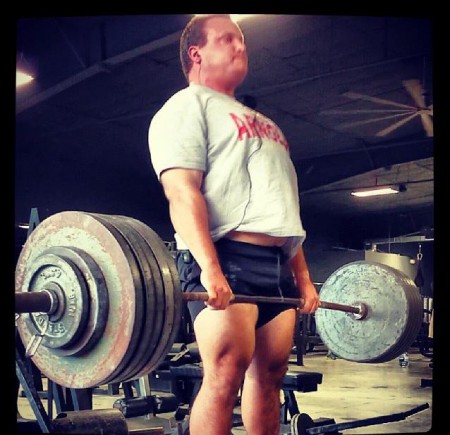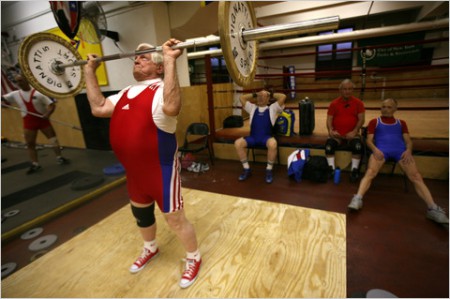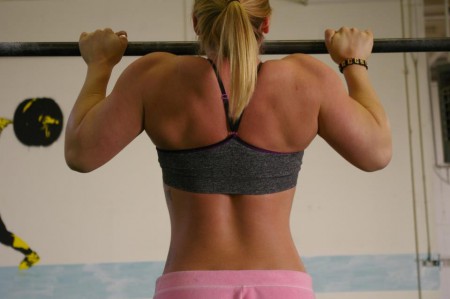I remember doing about 12 to 15 maximal reps between snatch, clean and jerk, and front squat a few years ago, and I was tired halfway into it. After the initial warm-ups, I would amp myself up for the maximal sets using imagery and cue words; purely psychological. I’ve increased my heart rate 50 beats per minute doing this while sitting in a chair using these methods (the pulse was obtained with a pulse oximeter).
It’s easy to intuitively know that “getting amped” can tire you out, but what is physiologically going on? Why is it tiring to do a lot of high intensity lifting? Or even high intensity conditioning workouts (as in CrossFit)? We can start by understanding epinephrine and norepinephrine (aka adrenaline and noradrenaline).
Typically epinephrine and norepinephrine are secreted by the adrenal medulla, a part of the adrenal gland that sits on the kidney, but norepinephrine is also a neurotransmitter released by neurons in the sympathetic nervous system. There are lots of smart words here, but the sympathetic nervous system is summed up as the “fight or flight” response while the parasympathetic takes care of “rest and digest”. Both are necessary for sex, or at least good sex, but I digress.
These hormones are amino acid based, which means they are water soluble and therefore not fat soluble. If you can remember back to your basic biology days, cellular walls are made out of a phospholipid bilayer. In other words, cell walls are made out of fats and cholesterol — which is a mega huge raging reason you need to eat quality fats in your diet, but that’s another digression.
Anyway, epinephrine is not fat soluble, so it can’t just pass through cell walls. Instead, it attaches on receptors on the cellular membrane and creates a chain of reactions inside that cell; a process called a cascade. This cascade can change a lot of stuff going on in a given cell from just a little bit of epinephrine, and that’s why it’s effective; lots of change from just a little amount.
The primary effects of dumping epinephrine and norepinephrine into your body are increased heart rate and blood pressure (via vasoconstriction, or narrowing of specific blood vessels), increasing respiratory rate (via bronchodilation, or making lung airways bigger), increasing blood flow to muscles (via vasodilation), increasing blood sugar levels by breaking down stored glycogen in the liver, and lastly, increasing nearly every cell’s metabolism and burning glucose and breaking down proteins and fats.
Well fuck, there’s a lot going on there. Basically it preps the body for some sort of intense event, like uppercutting a predator or running from prison rape (but you can’t escape; it’s prison!). The part we are more concerned with is cellular metabolism. Burning glucose and breaking down proteins and fats means getting substrates ready for lots of action, but it isn’t sustainable. These macronutrients are stored in special ways, but they need to be broken back down to be used, which uses energy. After the event, you have consumed lots of energy and don’t have stores left, so you feel tired.
Imagine doing this every single workout multiple times a week until further notice; it’s metabolic madness. Do you understand now why doing CrossFit six days a week or lifting with a high frequency and intensity isn’t sustainable without performance enhancement drugs?
Furthermore, imagine if this cascade happened routinely from psychological and emotional stress. It’s easy to see why people use the term “adrenal fatigue”. Call it whatever you want, but getting stressed physically or emotionally is the same and it messes with your body. Understanding one little cog called epinephrine in the giant metabolic machine can show us how too much exposure can be debilitating. Or at the very least you know why you’re so damn tired after amping up in training or competition.



